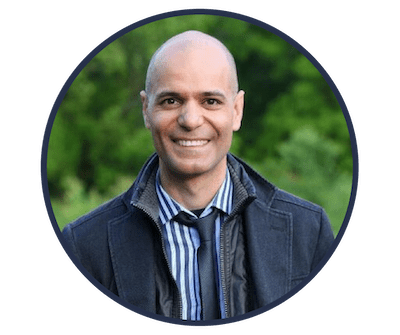Temporomandibular Joint (TMJ) Management with Dr. Bahram Jam
By: Estimated reading time: 5 minutes
By: Estimated reading time: 5 minutes
Introduction to the Temporomandibular Joint (TMJ)
In this blog, we will discuss one of the most controversial and most complex joints in the human body, temporomandibular joint (TMJ) and a few physiotherapy technique options for the evaluation and treatment of the TMJ developed by Bahram Jam, physiotherapist and Founder of the Advanced Physical Therapy Education Institute (APTEI).
Strangely, this is the most used joint in the human body, yet it's the least addressed and treated joint in the human body!
You might be thinking 'I hardly ever see people with TMJ dysfunction', which could be true. However, do you consider the TMJ when someone comes in with neck pain or headaches?
When to Assess the TMJ?
Below are some of the situations where we should assess the TMJ:
- Patients who report having headaches in any place, but particularly if they report headaches in the temporal region right along the temporalis muscle or suboccipital headaches.
- Patients who report dizziness or nausea, especially after a motor vehicle accident.
- Patients who report earaches or sensation of fullness in the ear. It's important to note you may need to specifically ask your patients if they are experiencing these symptoms because most patients don't think they need to report their ear problems to a physiotherapist.
- Patients who report neck stiffness, especially in the upper cervical spine.
- Patients who report local pain and clicking in the TMJ.
Guiding Questions
There are many guiding questions that we can use to identify aggravating factors in our patients who have TMJ pain.
The first question is what aggravates the symptoms? If it's local TMJ problems, some obvious answers are:
- It's aggravated when I yawn or when I open my mouth
- It's aggravated when I chew on things like raw carrots or when I bite into an apple or big burger.
These are easy things to pick up on.
More subtle aggravating factors that they may not notice are things like biting nails, chewing gum, habitually biting their necklace, etc. Other activities that may aggravate them include sustained postures, for example working on a computer in a forward head posture for seven or eight hours at work.
One of the more common aggravating factors they may or may not know is stress and anxiety. The challenge with stress and anxiety is that it's a vicious cycle - the more pain they have, especially headaches, dizziness, and nausea, the more stressed and anxious they feel. This further perpetuates the vicious cycle of pain and TMJ syndrome.
Watch this Video by Bahram Jam to Learn More About the TMJ:
Simple Techniques to Help Patients Who Have TMJ Pain
Physiotherapists can help patients get out of the vicious cycle of pain and TMJ syndrome by going through a simple evaluation and then applying management techniques. A helpful way to start to discuss management techniques with patients is to ask them what relieves their symptoms when they're in pain.
We know that when a patient has TMJ syndrome, one of the relieving factors is simply avoiding the aggravating factors. For example, avoid chewing hard or crunchy foods, lessen their anxiety by not going to work, and usually, vacation helps!
One of the most common treatments that can help patients' symptoms is non-steroidal anti-inflammatory medications (NSAIDs), which can temporarily help the symptoms.
Importance of Consulting a Dentist Before Assessing the TMJ
Dentists have the knowledge that physiotherapists don't have concerning occlusion, teeth problems, and other issues that can certainly exacerbate the TMJ. Also, dentists are great at picking up a condition called bruxism, which is the involuntary or voluntary grinding or clenching of the teeth. If a patient has bruxism a dentist may prescribe a mouth guard for daytime or nighttime.
Bahram recommends physiotherapists ask their patient to always consult a dentist before providing management or treatment for TMJ syndrome. Now having said this, most of Bahram Jams' referrals are from dentists who refer to him because regrettably, dentists are sometimes the cause of many TMJ problems!
Want to Continue Learning about TMJ Management With Bahram Jam?
Bahram has put together an online course called 'Temporomandibular Joint Management'
What's Included in this Online TMJ Course :
- This TMJ course will review the basic physiotherapy approaches to the evaluation of the temporomandibular joint.
- This TMJ course includes a full instructional e-manual that may be downloaded and printed.
- This online continuing education course enables physiotherapists to develop practical knowledge of the potential anatomical factors leading to TMJ pain & TMJ dysfunctions.
- There are 1.5 hours of video lessons included
- This TMJ course also includes highly effective muscular retraining exercises and education which can be shared with patients using Embodia for Home Exercise Programs (HEP). You can share the exercise videos created by Bahram Jam using a mobile or web app, patients can track their progress, symptom levels, and functional goals, and they receive push notifications to remind them to do their exercises.
Learn more about Embodia for HEP by clicking here or contact us for a full tour of the app and dashboard at support@embodiaapp.com
Conclusion
In this blog, we have briefly discussed one of the most complex joints in the human body, the TMJ, and we discussed various situations in which physiotherapists should assess the TMJ.
Try some of the guiding questions the next time you have a patient who may have TMJ syndrome and make sure to refer to your patient to their dentist if TMJ syndrome is suspected!
If you want to learn more about temporomandibular joint management and physiotherapy treatment techniques enroll in the APTEI TMJ course today.
Learn more about TMJ management by joining Bahram Jam's online APTEI TMJ Management Course!
---
Date written: 15 Jan 2022
Last update: 16 Dec 2025

PT, D.SC.PT, M.PHTY, B.SC.PT, FCAMT
Bahram is a physiotherapist and founder of the Advanced Physical Therapy Education Institute (APTEI). He's taught 1000+ continuing education courses to healthcare professionals across Canada & internationally.
He has instructed over one thousand post-graduate orthopaedic and pain science courses and has been a guest presenter at several physiotherapy and medical conferences across Canada and internationally.
His primary clinical approach is to identify relevant functional impairments and determine the best self-management strategy to maximize patient independence.
